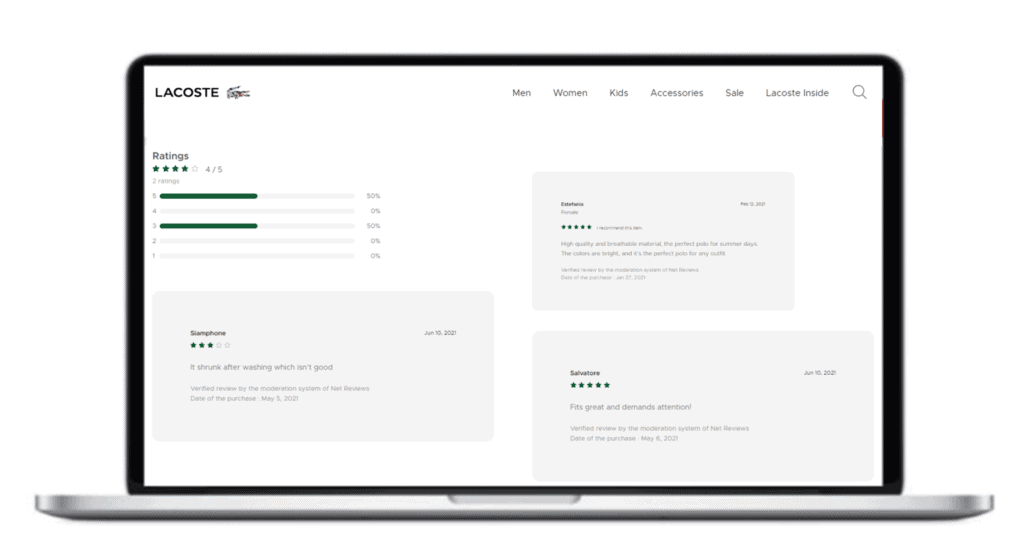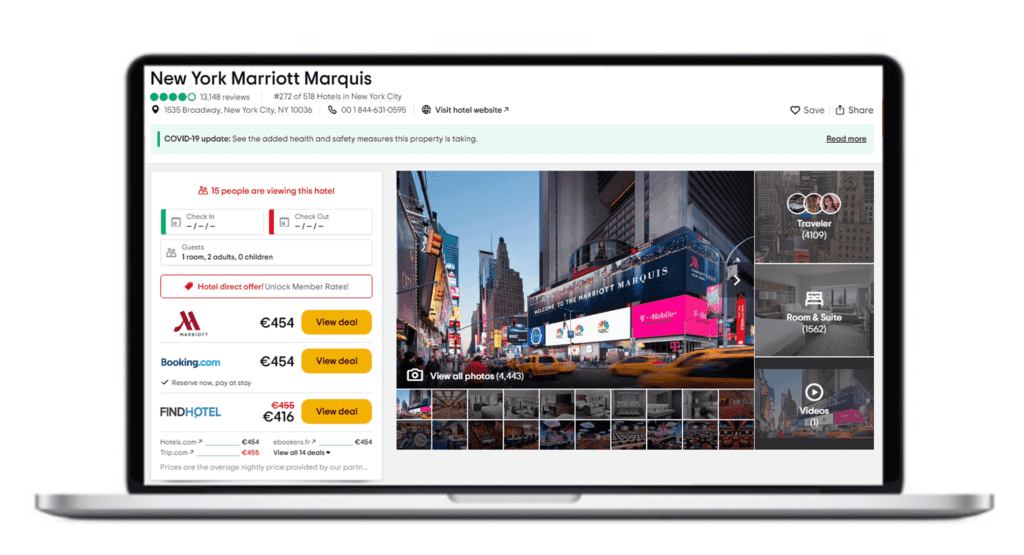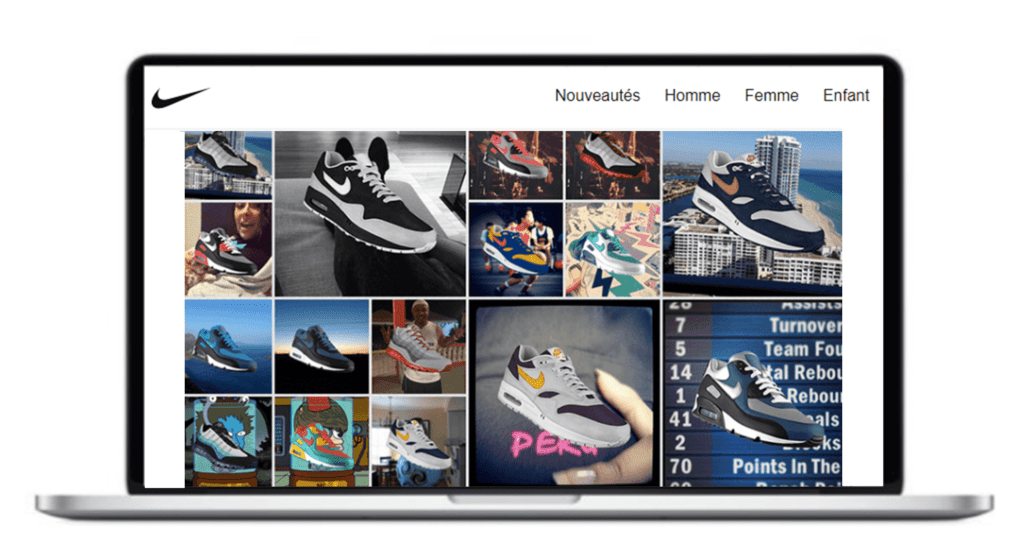Nearly everyone produces UGC these days, they just might not know what it’s called! Put simply, UGC or user-generated content is what we call any content created by users and featuring a brand. Customer reviews are UGC. A user sharing photos of their hotel room on Instagram is creating UGC. A web user who posts...
Nearly everyone produces UGC these days, they just might not know what it’s called! Put simply, UGC or user-generated content is what we call any content created by users and featuring a brand. Customer reviews are UGC. A user sharing photos of their hotel room on Instagram is creating UGC. A web user who posts a video on social media to show off their latest pair of sneakers is producing UGC.
In this comprehensive guide, we’re going to look at why brands should be including UGC in their marketing strategy. We’re going to outline the main types of user-generated content and give you some examples of UGC. Then we’re going to give you a few tips and best practices for how to get the most out of UGC.
UGC or user-generated content: what is it exactly? [Definition]
UGC is the acronym for “User-Generated Content”. Once we’ve unpacked the term for you, you’ll be an expert! UGC is simply the content your users or customers produce featuring your brand or products. You’ll see later on that this content can take different forms, some of them pretty standard and others more original.
The reviews customers leave on a website’s product pages are a typical example of traditional UGC. User-generated video is a more elaborate and original format.
UGC refers to content created by users, but also content produced by customers or web users. So, as you can see, the word “user” in “user-generated” should be understood in the broad sense. Some use the term CGC or Customer-Generated Content to describe content created by “customers”. But adding a new term into the mix might just be complicating things unnecessarily. At Teester, we use an inclusive definition of users.
By now you will have understood that UGC is different from the content created and shared by brands, i.e. “brand content”, meaning all the content produced by marketing teams, web copywriters, advertisers, community managers, etc.
6 reasons to use UGC in your marketing strategy
1 – Gain more credibility
UGC is powerful because it is authentic. Users aren’t paid or commissioned by brands to create this content. They produce authentic reviews to help guide other users in their choices, and they do this in all sectors (fashion, travel, automotive, insurance, restaurants, etc.).
Web users, and Millennials, in particular, are becoming more and more immune to traditional marketing methods and are increasingly suspicious of sponsored content. They want authenticity and reviews from real customers. A Nielson study relayed by Smart Insights showed that 92% of customers trust user-generated content more than they trust traditional advertising.

On top of giving you more credibility with your community, using UGC in your marketing strategy earns you major brownie points with Google. Google’s web crawlers consider that user-generated content builds trust and that improves your ranking on the search engine.
2 – Increase your engagement rate
User-generated content increases your engagement rate. Most of your customers are nano-influencers and this makes them precious allies. They’re your main ambassadors and your best bet for viral and authentic marketing. That’s because web users engage with each other much more than they do with brands.
The content they produce and share on social media receives proportionally more engagement from their peers and is considered reliable and trustworthy. Asking your community to create UGC is also a great way to get lots of photos, videos, articles featuring your products. This in turn will get you a heap of authentic customer reviews and increase your e-reputation.
3 – Increase your visibility
When web users create content or contribute to its creation, they love to share it with their community on social media. The posts will reach not only your own brand community but also other users (a pool of potential prospects) that follow your customers on social media, i.e. their friends, family, colleagues, etc. This significantly increases your audience, giving you more visibility and allowing you to build up your reputation on the web and attract traffic to your site, with one major added advantage: consumers are much more likely to trust content shared by other consumers.
4 – Reduce your marketing costs
User-generated content saves you money on marketing costs. The reason is simple: it’s your users, customers, and web users who are creating your brand’s content.
Unlike paid media, where brands leverage third-party channels to market themselves (press ad space, TV spots, email campaigns, billboards, Google AdWords, radio ads, etc.), word-of-mouth, comments, blog articles, forum posts, user-generated video reviews, positive press coverage, and all other forms of UGC are “earned media” for companies.
In times of economic crisis when marketing budgets tend to be tight, using UGC is the ideal solution. UGC is a cheaper way to increase your brand’s visibility. That doesn’t mean that UGC will replace brand content! The two work hand in hand.
5 – Get to know your users and customers
Content that is created and shared by users, in the form of customer reviews, Instagram posts or blog comments, for example, allows you to really get to know your users and customers, their expectations and wants, their needs, and how they feel about your products and services. Encouraging UGC creation is a way to develop what’s known as the “Voice of the Customer”, or VoC.
6 – Become more user- and customer-centric
By valuing and showcasing UGC, by encouraging your users to share their reviews and their experience with your brand, you’re making them your focus. You’re involving them in your brand’s adventure and fostering the creation of a real community. Encouraging your users to produce UGC sends them the message: “Your voice counts! Express yourself!” Using UGC is an essential lever for becoming user-centric and having your users actively participate in your brand’s development.
A look at 6 types of user-generated content
There are as many types of UGC as there are forms of content that can be published and shared by your users. Here are the main types of user-generated content:
1 – Customer reviews
Customer reviews are the most widespread and likely the oldest form of user-generated content. This type of UGC is usually found on the product pages of e-commerce sites.
2 – Comments on articles and forums
The comments section under articles posted on a brand’s blog enables users and customers to interact with the content. Some brands host their own forums, so their users can communicate with them.
3 – Messages posted on social media
Social media are the ultimate channel for sharing UGC. When a customer posts content about your brand on Facebook, Instagram, or Twitter, they’re creating UGC… and they might not even know it!
4 – Photo sharing
A picture is worth a thousand words! Nowhere is this truer than on social media. Photos are the lifeblood of social networks like Instagram and Pinterest. In posts and stories posted to social media, the message is often better conveyed through pictures than text.
5 – User-generated video
Video is the favorite medium of web users looking for reviews from other consumers. User-generated video has really been taking off over the last few years. It allows consumers to get an accurate idea of the product or service the company is selling, through the experience of another consumer sharing precious and relevant advice. Overall, video is now gaining more and more ground in marketing. User-generated videos are the ultimate UGC.
Some examples of UGC in marketing
1 – Lacoste
Lacoste.com knows that customer reviews are a must-have for any e-commerce site. That’s why the store is working with Verified Reviews to invite its customers to leave reviews on their product pages. This is a very common practice these days; most e-commerce sites have a dedicated area for reviews on their product pages.

2 – TripAdvisor
UGC is what Tripadvisor is all about. This well-known platform features reviews from users and encourages them to share photos of their experiences. Tripadvisor owes its success to millions of users. Other platforms, like Booking.com or other travel booking platforms, also make massive use of UGC.

3 – Nike
Nike is also a brand using UGC. The famous sportswear brand made some advertising campaigns using the photos of her customers on physical billboards. The brand like to involve its customers in advertising campaigns and give them a central role. This strategy humanizes the ads and makes them more authentic.
Another good example of the importance of UGC!

4 – Petit Bateau
Earlier, we talked about user-generated videos. Here is a great example from Petit Bateau. The famous French fashion label for kids implemented a campaign encouraging its best customers to film themselves testing their best-selling products. Petit Bateau received hundreds of videos. The best ones were optimized, edited, and published on the website’s product pages. The result was a 12% uptick in conversion. For more information, please check our case study.
4 tips and best practices for adding UGC to your marketing strategy
To wrap up this article, here are some tips to get the most out of UGC.
1 – Authenticity is Key
If consumers prefer user-generated content to brand content, it’s precisely because it is authentic. Inauthentic UGC that looks and feels like promotional content will fall flat!
2 – Have a good mix of visual formats
Text is no longer enough these days. Consumers need to see and get a feel for a product before buying. For this, nothing beats user-generated videos and photos by your communities! These types of content are not only the most reassuring during the buying process, they are also the most engaging and get the most shares on social media!
3 – Make your content shareable and memorable
Web users are exposed to so much different content in a day. You need to stand out. This is true for both brand content and user-generated content. If you plan on launching a UGC campaign, keep this in mind: UGC has to grab attention and, if you want to go viral, it has to be easily shareable.
4 – Measure the impact of each bit of content
To improve the performance of your UGC, the first step is to analyze it. So you’ve decided to share user-generated photos and videos on your website’s product pages? Great! Now measure their impact on your conversion rate! You’re sharing UGC on social media? Calculate the engagement rate it’s generating compared with brand content. You’ve flooded the web with reviews and all sorts of user-generated content? Measure the impact on your SEO! By taking the time to measure the results you’re achieving with UGC, you’ll be able to work out the best formats and what gets the most traction.








